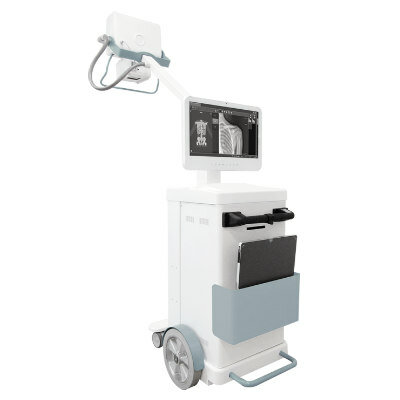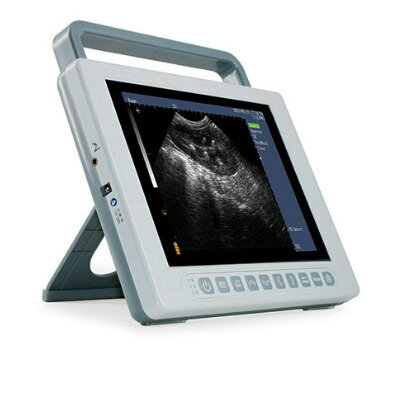Imaging Societies Publish Statement on Use of AI in Radiology
|
By MedImaging International staff writers Posted on 16 Oct 2019 |
Experts in the use of artificial intelligence (AI) in radiology from many of the world’s leading radiology, medical physics and imaging informatics groups have published an aspirational statement to guide the development of AI in radiology. The multi-society statement focuses on three major areas: data, algorithms and practice. The authoring societies include the American College of Radiology (ACR), European Society of Radiology (ESR), Radiological Society of North America (RSNA), Society for Imaging Informatics in Medicine (SIIM), European Society of Medical Imaging Informatics (EuSoMII), Canadian Association of Radiologists (CAR) and American Association of Physicists in Medicine (AAPM).
As a new technology, AI lacks clear standards guiding its development and use. Authors emphasize that ethical use of AI in radiology should promote wellbeing and minimize harm resulting from potential pitfalls and inherent biases. It should also ensure that benefits and harms are distributed among stakeholders in a just manner that respects human rights and freedoms, including dignity and privacy.
“Radiologists remain ultimately responsible for patient care and will need to acquire new skills to do their best for patients in the new AI ecosystem,” said J. Raymond Geis, MD, FACR, FSIIM, ACR Data Science Institute senior scientist and one of the paper’s leading contributors. “The radiology community needs an ethical framework to help steer technological development, influence how different stakeholders respond to and use AI, and implement these tools to make the best decisions for — and increasingly with — patients.”
"Developments in artificial intelligence represent one of the most exciting, and most challenging, changes in how radiology services will be delivered to patients in the near future,” said Dr. Adrian Brady, Chairperson of the ESR Quality, Safety and Standards Committee and co-author. “The potential for patient benefit from AI implementation is great, but there are also significant risks of unexpected or unplanned harmful effects of these changes. It's incumbent on professionals working in this area to ensure that patient and public benefit and safety are paramount.”
“With the prospect of integration of AI into radiology research and clinical practice, it is incumbent upon the radiology community to develop codes of ethics and practice to guide the utilization of this powerful technology and ensure the privacy and safety of patients,” said co-author Matthew B. Morgan, MD, MS, associate professor and director of IT and Quality Improvement in Breast Imaging, Department of Radiology and Imaging Sciences, University of Utah, and member of the RSNA Radiology Informatics Committee.
"Because of the international nature of AI research, rapid pace of technology development and cross-border deployment of AI software, an ethical framework for AI in radiology was much needed," said An Tang, MD, MSc, FRCPC, chair of CAR's AI Working Group and co-author. "This multi-society statement highlights ethical issues and discusses how to detect and manage them in a manner that is beneficial to patients."
“Applications of AI to patient care in imaging have great potential, both for good as well as unintended consequences. The multi-society, multi-nationality statement draws from strengths of the participating organizations to broadly describe ethical challenges and presents several concrete considerations for those implementing and building AI models,” said Marc D. Kohli, MD, associate professor of radiology and biomedical imaging, medical director of imaging informatics for UCSF Health, chair-elect for SIIM and co-author.
“The application of AI tools in radiological practice lies in the hand of the radiologists, which also means that they have to be well-informed not only about the advantages they can offer to improve their services to patients, but also about the potential risks and pitfalls that might occur when implementing them,” said Erik R. Ranschaert, MD, PhD, president of EuSoMII. “This paper is therefore an excellent basis to improve their awareness about the potential issues that might arise, and should stimulate them in thinking proactively on how to answer the existing questions.”
Cynthia McCollough, PhD, FACR, FAAPM, FAIMBE and president of the AAPM emphasized that, “in order for AI technology to positively impact human health, it is crucial that robust and reproducible data, methods, guidelines, and tools are developed and made available. As quantitative and interdisciplinary scientists, medical physicists are playing an essential role in the development of these essential resources — we need to ensure that variability and bias are minimized in the data used to answer compelling medical questions.”
As a new technology, AI lacks clear standards guiding its development and use. Authors emphasize that ethical use of AI in radiology should promote wellbeing and minimize harm resulting from potential pitfalls and inherent biases. It should also ensure that benefits and harms are distributed among stakeholders in a just manner that respects human rights and freedoms, including dignity and privacy.
“Radiologists remain ultimately responsible for patient care and will need to acquire new skills to do their best for patients in the new AI ecosystem,” said J. Raymond Geis, MD, FACR, FSIIM, ACR Data Science Institute senior scientist and one of the paper’s leading contributors. “The radiology community needs an ethical framework to help steer technological development, influence how different stakeholders respond to and use AI, and implement these tools to make the best decisions for — and increasingly with — patients.”
"Developments in artificial intelligence represent one of the most exciting, and most challenging, changes in how radiology services will be delivered to patients in the near future,” said Dr. Adrian Brady, Chairperson of the ESR Quality, Safety and Standards Committee and co-author. “The potential for patient benefit from AI implementation is great, but there are also significant risks of unexpected or unplanned harmful effects of these changes. It's incumbent on professionals working in this area to ensure that patient and public benefit and safety are paramount.”
“With the prospect of integration of AI into radiology research and clinical practice, it is incumbent upon the radiology community to develop codes of ethics and practice to guide the utilization of this powerful technology and ensure the privacy and safety of patients,” said co-author Matthew B. Morgan, MD, MS, associate professor and director of IT and Quality Improvement in Breast Imaging, Department of Radiology and Imaging Sciences, University of Utah, and member of the RSNA Radiology Informatics Committee.
"Because of the international nature of AI research, rapid pace of technology development and cross-border deployment of AI software, an ethical framework for AI in radiology was much needed," said An Tang, MD, MSc, FRCPC, chair of CAR's AI Working Group and co-author. "This multi-society statement highlights ethical issues and discusses how to detect and manage them in a manner that is beneficial to patients."
“Applications of AI to patient care in imaging have great potential, both for good as well as unintended consequences. The multi-society, multi-nationality statement draws from strengths of the participating organizations to broadly describe ethical challenges and presents several concrete considerations for those implementing and building AI models,” said Marc D. Kohli, MD, associate professor of radiology and biomedical imaging, medical director of imaging informatics for UCSF Health, chair-elect for SIIM and co-author.
“The application of AI tools in radiological practice lies in the hand of the radiologists, which also means that they have to be well-informed not only about the advantages they can offer to improve their services to patients, but also about the potential risks and pitfalls that might occur when implementing them,” said Erik R. Ranschaert, MD, PhD, president of EuSoMII. “This paper is therefore an excellent basis to improve their awareness about the potential issues that might arise, and should stimulate them in thinking proactively on how to answer the existing questions.”
Cynthia McCollough, PhD, FACR, FAAPM, FAIMBE and president of the AAPM emphasized that, “in order for AI technology to positively impact human health, it is crucial that robust and reproducible data, methods, guidelines, and tools are developed and made available. As quantitative and interdisciplinary scientists, medical physicists are playing an essential role in the development of these essential resources — we need to ensure that variability and bias are minimized in the data used to answer compelling medical questions.”
Latest Industry News News
- Bayer and Google Partner on New AI Product for Radiologists
- Samsung and Bracco Enter Into New Diagnostic Ultrasound Technology Agreement
- IBA Acquires Radcal to Expand Medical Imaging Quality Assurance Offering
- International Societies Suggest Key Considerations for AI Radiology Tools
- Samsung's X-Ray Devices to Be Powered by Lunit AI Solutions for Advanced Chest Screening
- Canon Medical and Olympus Collaborate on Endoscopic Ultrasound Systems
- GE HealthCare Acquires AI Imaging Analysis Company MIM Software
- First Ever International Criteria Lays Foundation for Improved Diagnostic Imaging of Brain Tumors
- RSNA Unveils 10 Most Cited Radiology Studies of 2023
- RSNA 2023 Technical Exhibits to Offer Innovations in AI, 3D Printing and More
- AI Medical Imaging Products to Increase Five-Fold by 2035, Finds Study
- RSNA 2023 Technical Exhibits to Highlight Latest Medical Imaging Innovations
- AI-Powered Technologies to Aid Interpretation of X-Ray and MRI Images for Improved Disease Diagnosis
- Hologic and Bayer Partner to Improve Mammography Imaging
- Global Fixed and Mobile C-Arms Market Driven by Increasing Surgical Procedures
- Global Contrast Enhanced Ultrasound Market Driven by Demand for Early Detection of Chronic Diseases
Channels
Radiography
view channel
Novel Breast Imaging System Proves As Effective As Mammography
Breast cancer remains the most frequently diagnosed cancer among women. It is projected that one in eight women will be diagnosed with breast cancer during her lifetime, and one in 42 women who turn 50... Read more
AI Assistance Improves Breast-Cancer Screening by Reducing False Positives
Radiologists typically detect one case of cancer for every 200 mammograms reviewed. However, these evaluations often result in false positives, leading to unnecessary patient recalls for additional testing,... Read moreMRI
view channel
PET/MRI Improves Diagnostic Accuracy for Prostate Cancer Patients
The Prostate Imaging Reporting and Data System (PI-RADS) is a five-point scale to assess potential prostate cancer in MR images. PI-RADS category 3 which offers an unclear suggestion of clinically significant... Read more
Next Generation MR-Guided Focused Ultrasound Ushers In Future of Incisionless Neurosurgery
Essential tremor, often called familial, idiopathic, or benign tremor, leads to uncontrollable shaking that significantly affects a person’s life. When traditional medications do not alleviate symptoms,... Read more
Two-Part MRI Scan Detects Prostate Cancer More Quickly without Compromising Diagnostic Quality
Prostate cancer ranks as the most prevalent cancer among men. Over the last decade, the introduction of MRI scans has significantly transformed the diagnosis process, marking the most substantial advancement... Read moreUltrasound
view channel
Deep Learning Advances Super-Resolution Ultrasound Imaging
Ultrasound localization microscopy (ULM) is an advanced imaging technique that offers high-resolution visualization of microvascular structures. It employs microbubbles, FDA-approved contrast agents, injected... Read more
Novel Ultrasound-Launched Targeted Nanoparticle Eliminates Biofilm and Bacterial Infection
Biofilms, formed by bacteria aggregating into dense communities for protection against harsh environmental conditions, are a significant contributor to various infectious diseases. Biofilms frequently... Read moreNuclear Medicine
view channel
New SPECT/CT Technique Could Change Imaging Practices and Increase Patient Access
The development of lead-212 (212Pb)-PSMA–based targeted alpha therapy (TAT) is garnering significant interest in treating patients with metastatic castration-resistant prostate cancer. The imaging of 212Pb,... Read moreNew Radiotheranostic System Detects and Treats Ovarian Cancer Noninvasively
Ovarian cancer is the most lethal gynecological cancer, with less than a 30% five-year survival rate for those diagnosed in late stages. Despite surgery and platinum-based chemotherapy being the standard... Read more
AI System Automatically and Reliably Detects Cardiac Amyloidosis Using Scintigraphy Imaging
Cardiac amyloidosis, a condition characterized by the buildup of abnormal protein deposits (amyloids) in the heart muscle, severely affects heart function and can lead to heart failure or death without... Read moreGeneral/Advanced Imaging
view channel
New AI Method Captures Uncertainty in Medical Images
In the field of biomedicine, segmentation is the process of annotating pixels from an important structure in medical images, such as organs or cells. Artificial Intelligence (AI) models are utilized to... Read more.jpg)
CT Coronary Angiography Reduces Need for Invasive Tests to Diagnose Coronary Artery Disease
Coronary artery disease (CAD), one of the leading causes of death worldwide, involves the narrowing of coronary arteries due to atherosclerosis, resulting in insufficient blood flow to the heart muscle.... Read more
Novel Blood Test Could Reduce Need for PET Imaging of Patients with Alzheimer’s
Alzheimer's disease (AD), a condition marked by cognitive decline and the presence of beta-amyloid (Aβ) plaques and neurofibrillary tangles in the brain, poses diagnostic challenges. Amyloid positron emission... Read more.jpg)
CT-Based Deep Learning Algorithm Accurately Differentiates Benign From Malignant Vertebral Fractures
The rise in the aging population is expected to result in a corresponding increase in the prevalence of vertebral fractures which can cause back pain or neurologic compromise, leading to impaired function... Read moreImaging IT
view channel
New Google Cloud Medical Imaging Suite Makes Imaging Healthcare Data More Accessible
Medical imaging is a critical tool used to diagnose patients, and there are billions of medical images scanned globally each year. Imaging data accounts for about 90% of all healthcare data1 and, until... Read more



















